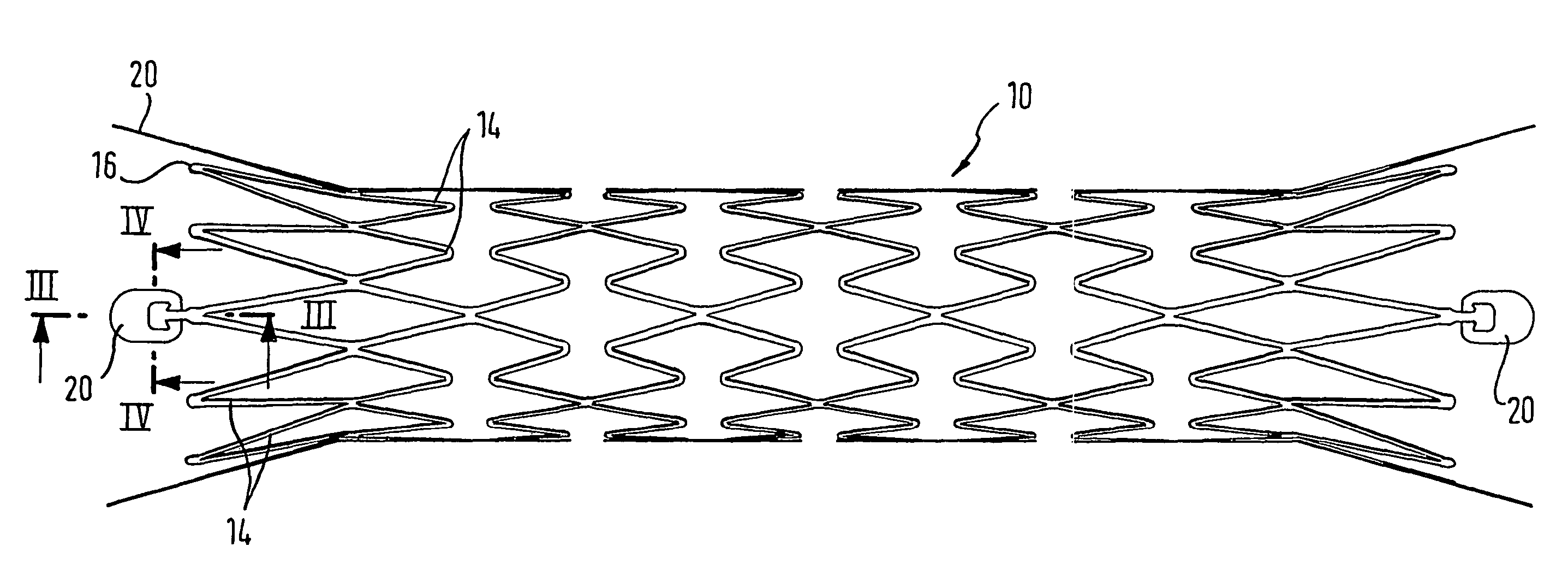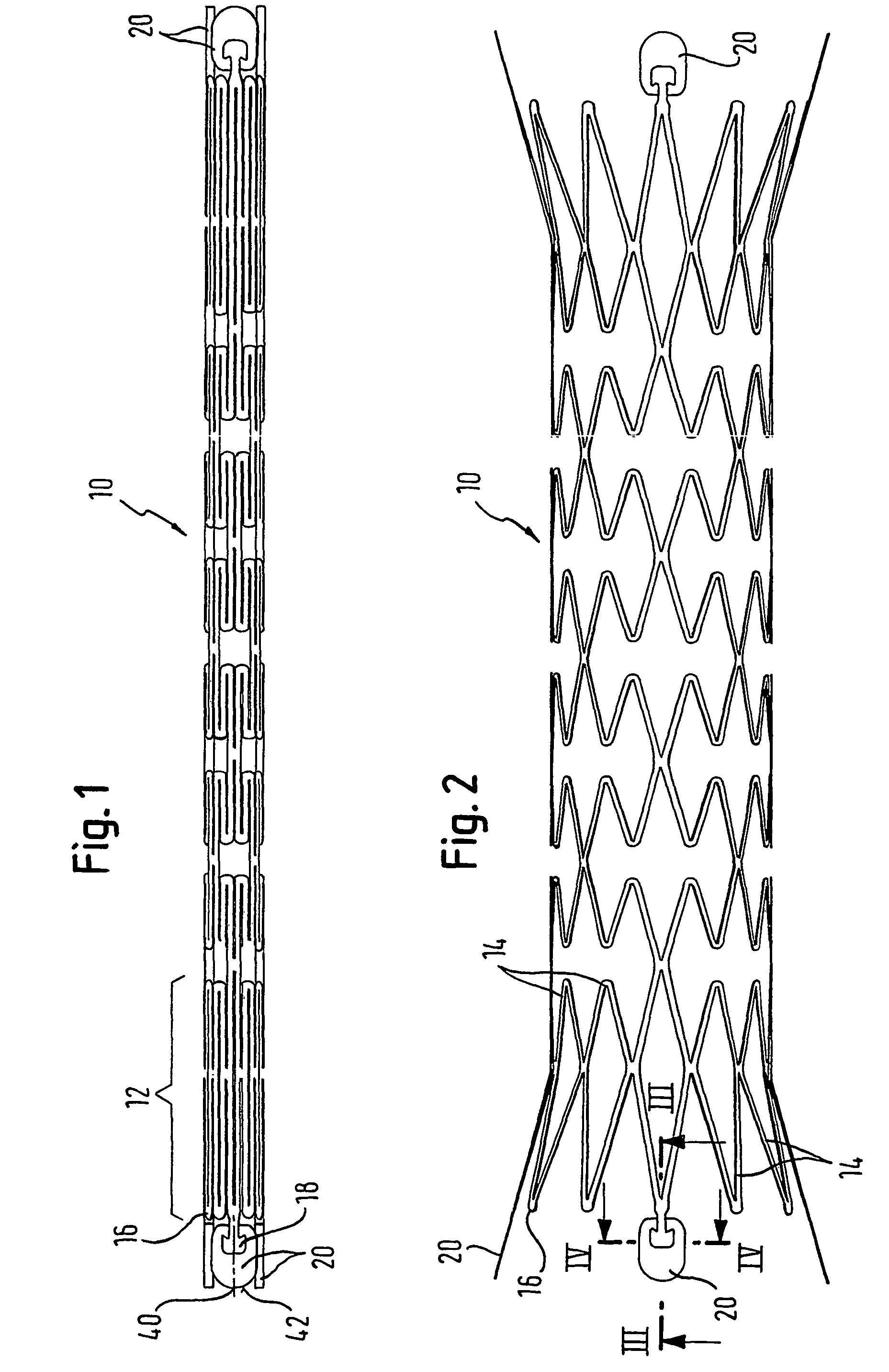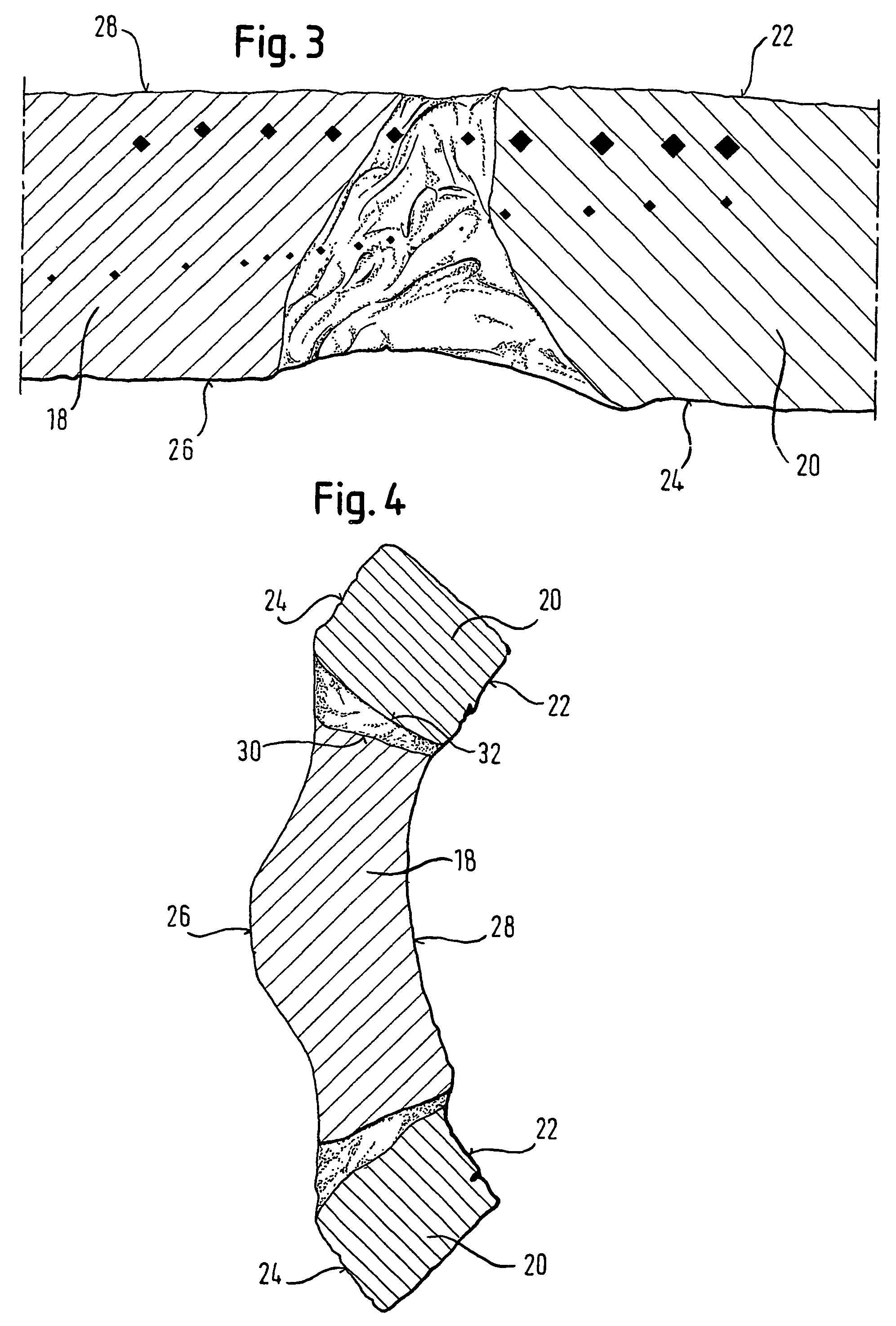Implant with attached element and method of making such an implant
a technology of attached elements and implants, which is applied in the field of implants, can solve problems such as the difficulty of aligning markers with stents, and achieve the effects of precise positioning and orientation of marker elements, precise tolerances, and enhanced method valu
- Summary
- Abstract
- Description
- Claims
- Application Information
AI Technical Summary
Benefits of technology
Problems solved by technology
Method used
Image
Examples
Embodiment Construction
[0044]Skilled readers will appreciate that the material of the stent tube and its markers lies all in a circular cross-section with a wall thickness as small as possible, so as to be consistent with the objective of maintaining a bodily lumen as open as possible. The stent cylinder can be formed from seamless tubular starting material, or from flat material rolled into a tube (which thus exhibits some sort of seam).
[0045]Skilled readers will also be well aware that there have been a very large number of proposals for strut patterns in the tubular configurations of stents. Whereas FIG. 1 shows an expandable strut pattern in a form which is particularly preferred for the present Applicant, nevertheless any other strut pattern will have points in it which define an end to the cylinder of the stent, and therefore will have points at the ends of the stent cylinder where markers can be attached.
[0046]Readers will also appreciate that self-expanding stents are delivered to stenting locatio...
PUM
| Property | Measurement | Unit |
|---|---|---|
| melting point | aaaaa | aaaaa |
| melting point | aaaaa | aaaaa |
| diameter | aaaaa | aaaaa |
Abstract
Description
Claims
Application Information
 Login to View More
Login to View More - R&D
- Intellectual Property
- Life Sciences
- Materials
- Tech Scout
- Unparalleled Data Quality
- Higher Quality Content
- 60% Fewer Hallucinations
Browse by: Latest US Patents, China's latest patents, Technical Efficacy Thesaurus, Application Domain, Technology Topic, Popular Technical Reports.
© 2025 PatSnap. All rights reserved.Legal|Privacy policy|Modern Slavery Act Transparency Statement|Sitemap|About US| Contact US: help@patsnap.com



